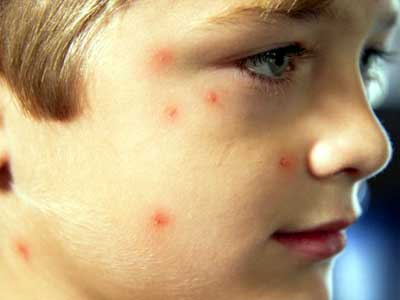“The best way to prevent chickenpox is to get the vaccine,” said board-certified pediatric dermatologist Sheila Fallon Friedlander, a professor of pediatrics and dermatology at the University of California San Diego. “However, if your child still gets chickenpox, there are many ways to relieve his or her symptoms and prevent skin infections.”
According to Dr. Friedlander, the most common symptom of chickenpox is a rash that turns into itchy, fluid-filled blisters and then scabs. The rash usually shows up on the face, chest and back first and then spreads to the rest of the body.
Other signs and symptoms of chickenpox may include:
Fever
Tiredness
Loss of appetite
Headache
{youtube}V6XpgoGncxc{/youtube}
To help care for children with chickenpox, Dr. Friedlander recommends the following tips:
- Keep your child at home. Since chickenpox is contagious, keep your child at home or limit his or her exposure to other people until all of his or her chickenpox blisters have formed scabs and no new blisters develop. It usually takes about a week for the blisters to become scabs.
- Soak in colloidal oatmeal baths. Available at your local drugstore, colloidal oatmeal will help relieve some of the itch. Add the oatmeal under the faucet while the tub is filling with lukewarm – not hot – water.
- After bathing, apply a topical ointment, such as calamine lotion, petroleum jelly or another fragrance-free, anti-itch lotion that contains pramoxine or menthol and camphor. Avoid over-the-counter topical antibiotics as they may cause an allergic reaction.
- Relieve fever. Use nonaspirin medications, such as acetaminophen or ibuprofen. Do not use aspirin or products that contain aspirin with chickenpox. The use of aspirin in children with chickenpox has been associated with Reye’s syndrome – a severe disease that affects the liver and brain and can cause death.
- Relieve itchiness. Consider giving your child an over-the-counter oral antihistamine for children. Always follow the directions on the label, and use the correct dose.
- Keep your child’s fingernails trimmed short. This will help prevent skin infections caused by scratching the blisters. For young children, put socks or mittens over their hands to prevent scratching. To limit scarring, make sure your child does not pick at his or her chickenpox.
“For most healthy children, chickenpox clears on its own without treatment,” said Dr. Friedlander. “However, see a pediatrician or board-certified dermatologist if you have a newborn with chickenpox; if your child has a weakened immune system or has trouble breathing; or if any of the blisters become infected.”

















Related Items
A new approach to treatment of liver cirrhosis…
New magnetic nanoparticles may help treat Cancer
Could this be the most contagious yawn…?